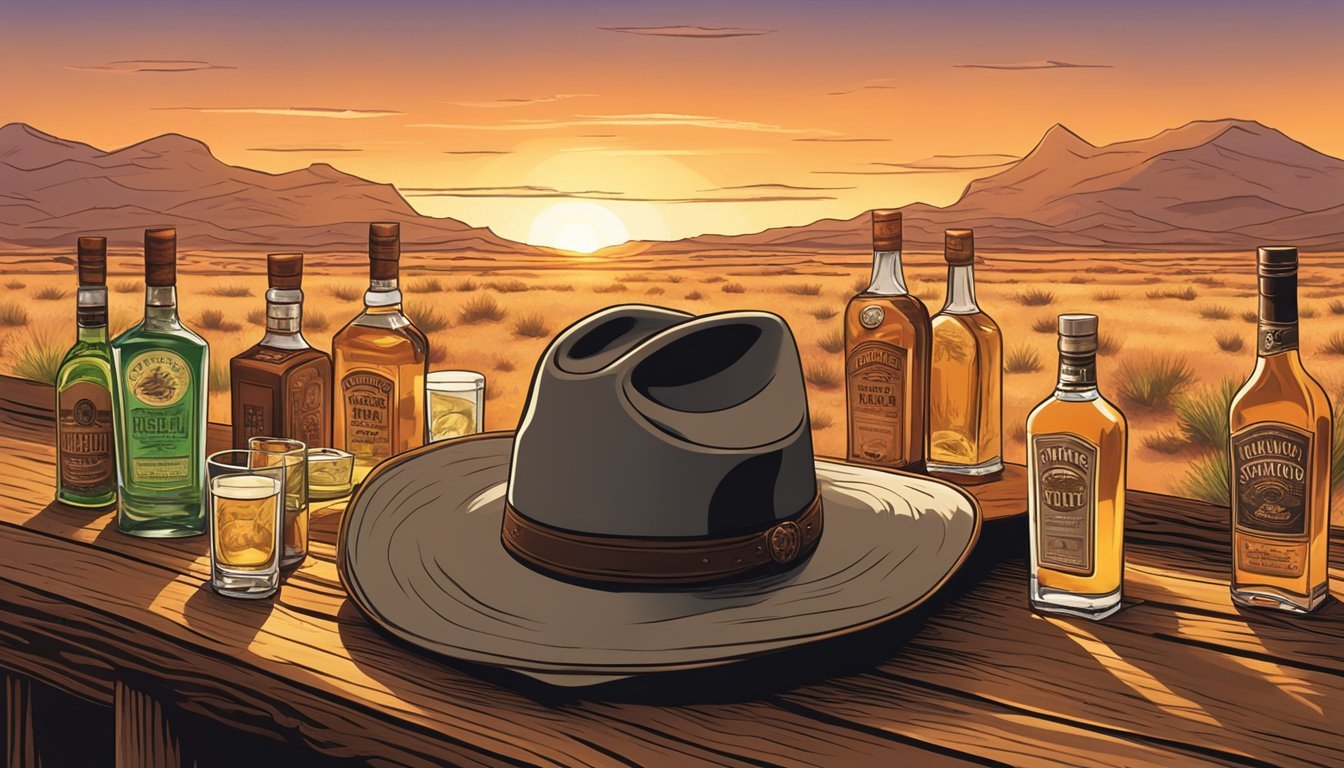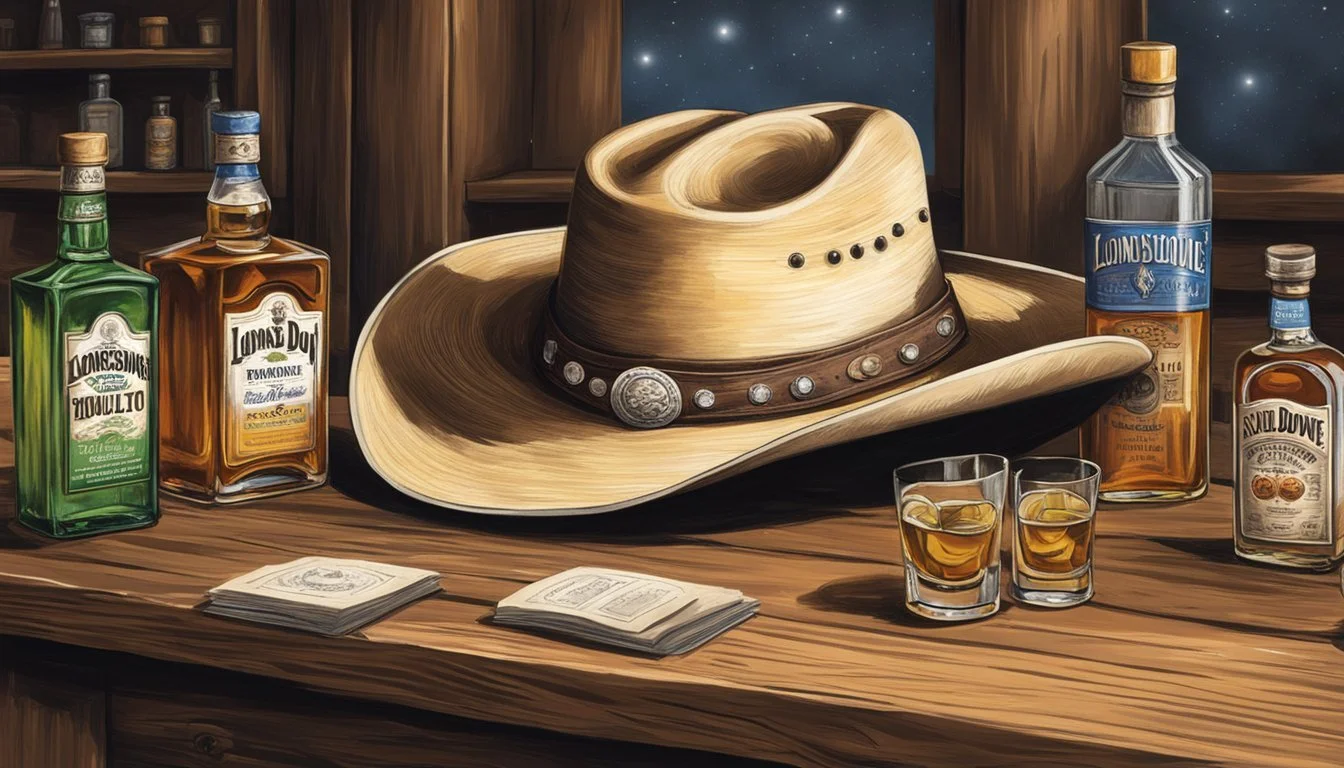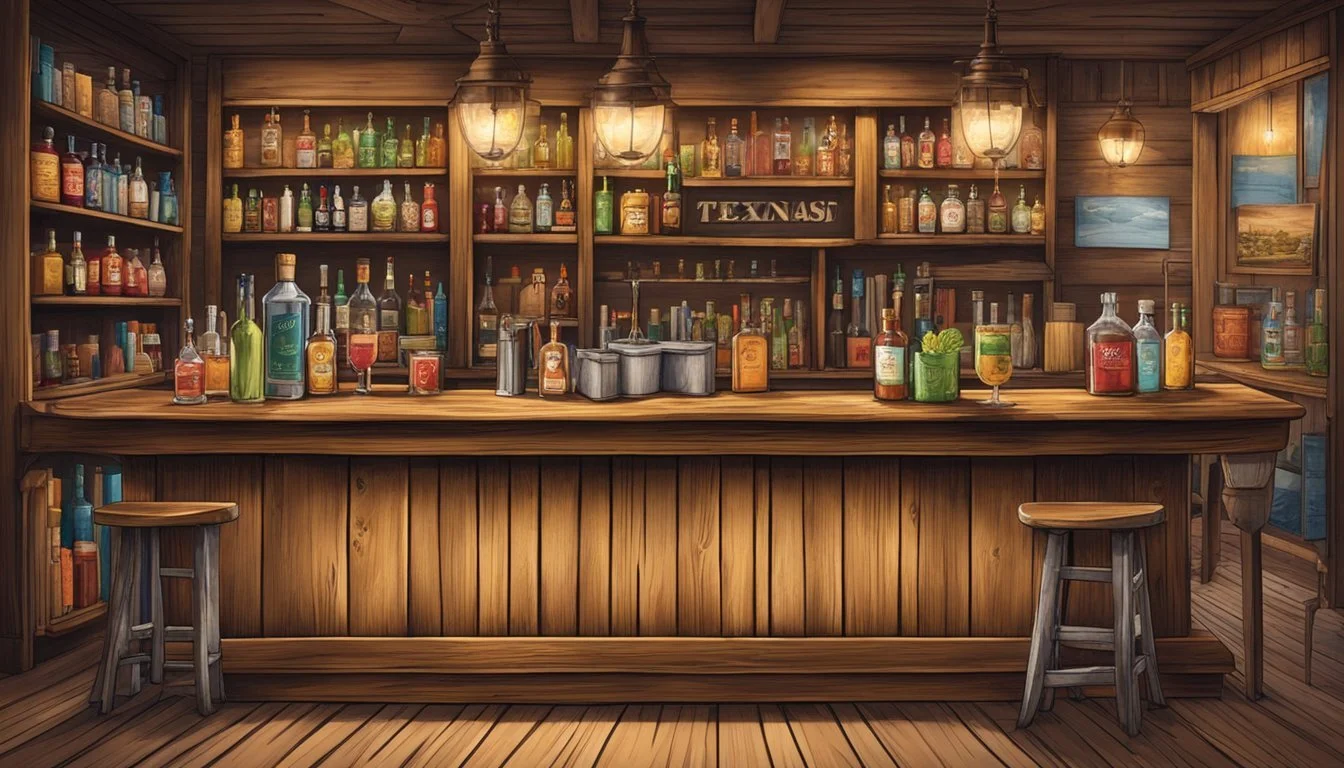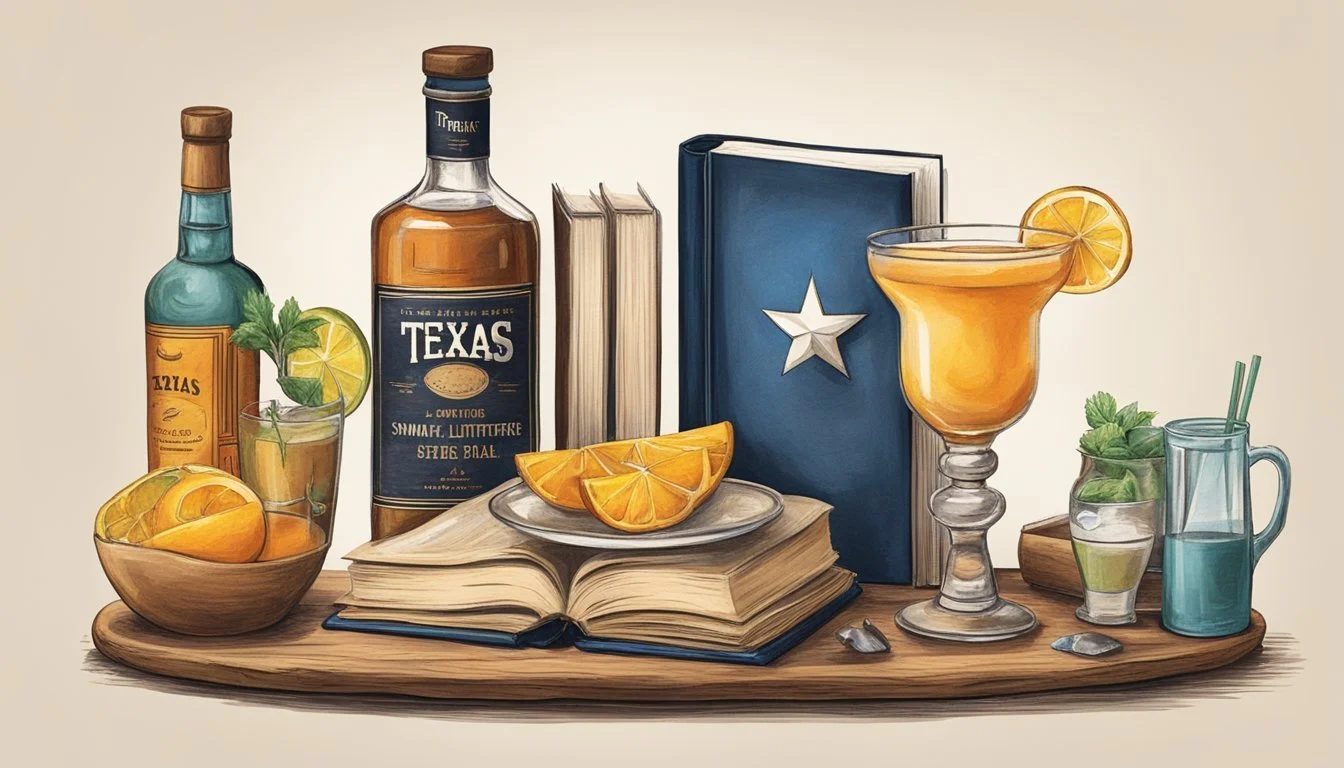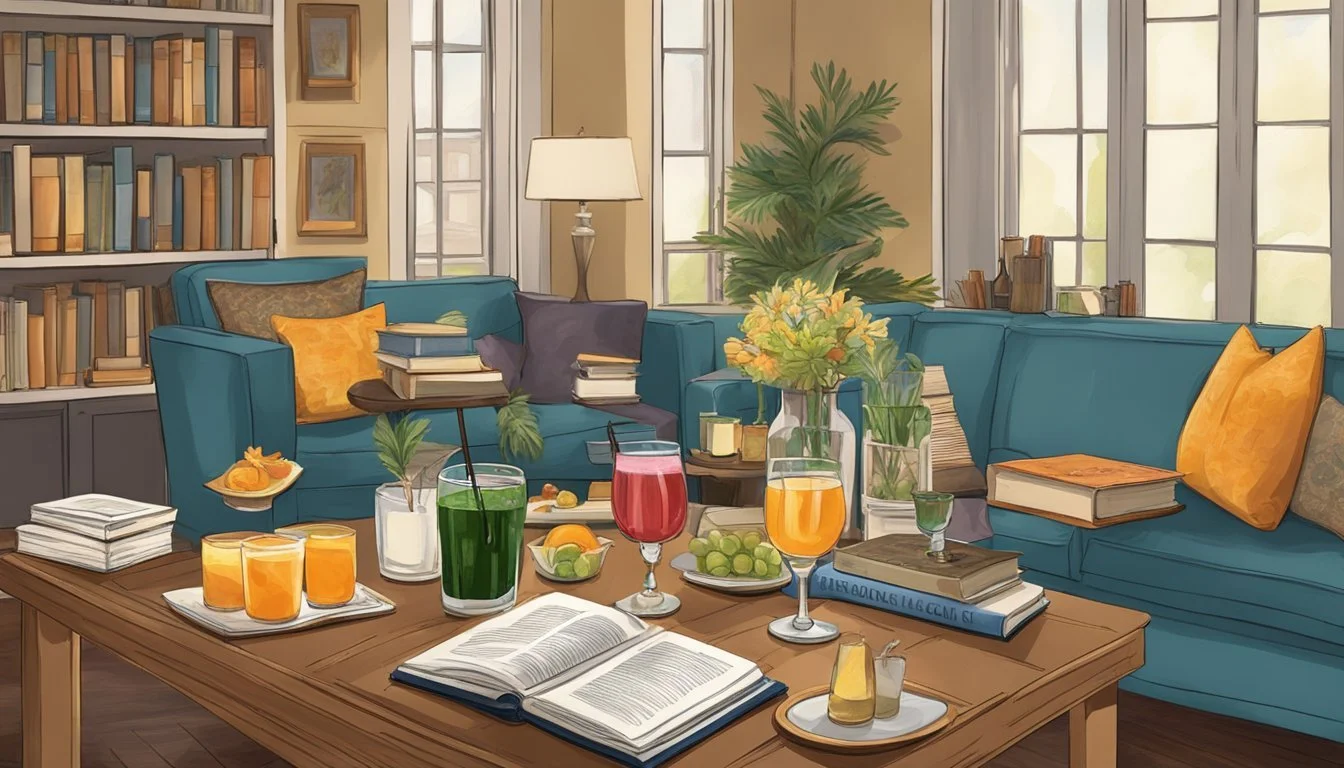Cocktails Inspired by Texas Literature
Savor the Lone Star State's Rich Narratives in Every Sip
Cocktails and literature have a storied connection, with many iconic drinks finding their origins or mention within the pages of celebrated books. Texas literature, with its rich tapestry of storytelling that captures the spirit of the Lone Star State, offers a particularly unique angle from which to explore this relationship. As both an art and a science, the crafting of cocktails inspired by literary works is an act of homage, seeking to evoke the themes, settings, and characters that define Texas narratives through the medium of taste and presentation.
Literary libations serve as a bridge between the world of the written word and the sensory experience of mixology. Texas, with its diverse cultural heritage and bold flavors, provides a backdrop for cocktails that are as flavorful and audacious as the literature they're drawn from. These beverages are more than just drinks; they are a form of narrative in themselves, allowing imbibers to engage with stories in a new and immersive way.
In the creation of cocktails inspired by Texas literature, mixologists become storytellers, blending ingredients that resonate with the nuances of the state's literary works. Whether mirroring the stark beauty of the West Texas plains or the complex layers of urban life in cities like Houston and Dallas, these cocktails encapsulate the essence of the tales that have been penned by Texas authors. They serve not just to quench thirst, but to kindle the imagination and celebrate the enduring legacy of Texas's literary culture.
The Role of Cocktails in Texas Literature
Cocktails in Texas literature serve as more than mere social lubricants; they often carry symbolic weight and offer insights into the characters' psyches.
Symbolism of Spirits in Storytelling
In Texas literature, cocktails and spirits frequently symbolize regional identity and historical eras. Authors like Larry McMurtry, whose work often delves into the heart of Texas life, use drinks to encapsulate the spirit of the state—rugged, strong, and steeped in tradition. Specific cocktails mentioned within stories can also represent the various facets of complex characters, setting the stage for deeper narrative exploration.
For example, an Old Fashioned may harken back to bygone times, reflecting a character’s yearning for the past. Alternatively, a character choosing a Mint Julep could signify a connection to Southern tradition, reminiscent of the tastes of writers like William Faulkner, who, while not a Texan himself, has had an influential presence in Southern literature.
Iconic Characters and Their Favorite Drinks
In discussing Texas literature and its iconic characters, one cannot ignore the heavyweights such as James A. Michener, Cormac McCarthy, and Katherine Anne Porter, who have created memorable personas that often come to life around saloon tables. These characters' drink choices are tellingly reflective of their personalities.
Jay Gatsby's preference for Gin Rickey, a cocktail made iconic by Ernest Hemingway, echoes through the pages of many tales, illustrating how the opulence and the facade of the Roaring Twenties seep into Texas stories.
The Margarita, arguably a Texas staple, can unveil a character's connection to the regional culture and love for the hearty, celebratory nature of Texas life.
By examining the cocktails beloved by the characters created by these authors, readers get a taste not only of the characters' preferences but also of the socio-cultural fabric that makes Texas literature distinctive.
Historical Context: Prohibition and the Jazz Age
In the 1920s, the intersection of Prohibition and the Jazz Age created a vibrant if at times, clandestine cultural landscape, where literature reflected the societal tensions and transformations of the era.
Texas During the Roaring Twenties
Texas in the Roaring Twenties was a state of contrast and change. On one hand, it mirrored the national enthusiasm for jazz, speakeasies, and the social liberation that pulsed through America. On the other, it faced the unique challenges posed by Prohibition, as federal and state laws clashed with local sentiments about alcohol consumption. Prohibition laws, which made the sale, production, and transportation of alcohol illegal, were in effect from 1920 through 1933. These regulations led to the rise of both speakeasies—illicit bars selling bootleg alcohol—and the practice of home-brewing.
Key Entities:
Prohibition (1920-1933): This era saw the rise of the speakeasy in Texas, as underground establishments sprang up across the state.
Jazz Age: Influences from the Jazz Age permeated through Texan culture, allowing for a new wave of musical expression even as traditional social norms were being challenged.
Roaring Twenties: A time of economic prosperity and cultural development in Texas, with significant growth in urban areas like Dallas and Houston.
Literary Response to Cultural Restriction
The literature of Texas in the 1920s captured the spirit of the Jazz Age with a sense of rebellion against Prohibition's constraints. Authors wove narratives that both subtly criticized and overtly defied the cultural restrictions of the time. Their works often delved into the dichotomy between the public adherence to Prohibition laws and the private, widespread defiance of them. Drawn to the themes of the era, writers created stories that echoed the whispers and rhythms of jazz, encapsulating the vibrancy of speakeasies and the secret enjoyment of forbidden cocktails. They also used their prose to explore the impacts of these cultural changes on Texas society.
Key Entities:
Cultural Restriction: Literary works often reflected the tension between the restrictive laws of Prohibition and the spirited defiance found in the underground social scene.
Prohibition: This era's literature from Texas frequently featured the complexities and contradictions of living under Prohibition, revealing the state's mixed sentiment towards the nationwide ban on alcohol.
Classic Cocktails and Literary Figures
This segment explores the fascinating intersection of iconic cocktails and their associations with prominent literary figures who have immortalized them in American literature.
Hemingway's Influence on Cocktail Culture
Ernest Hemingway, an aficionado of potent spirits, left an indelible mark on cocktail culture. He is most notably linked to the Mojito, a refreshing concoction of white rum, sugar, lime juice, soda water, and mint. Invented in Havana, this cocktail is often associated with Hemingway's time in Cuba and is thought to reflect his love for simplicity and vigor in both his writing and his taste in drinks.
Fitzgerald and the Glamour of the Gin Rickey
F. Scott Fitzgerald's "The Great Gatsby" epitomizes the opulence of the roaring twenties, a time when the Gin Rickey reigned supreme. This cocktail, made with gin, lime juice, and carbonated water, is not only mentioned in the novel but also evokes the sophistication and complexity of characters like Jay Gatsby and Daisy Buchanan. The Gin Rickey mirrors the era’s glitter and underlying sobriety of Fitzgerald’s narrative.
Tennessee Williams and the Southern Comfort Connection
The work of Tennessee Williams is steeped in the charm and spirit of the South. The Mint Julep, a traditional Southern cocktail comprising bourbon, mint, sugar, and crushed ice embodies this connection. It is symbolic of the regional setting common in Williams' plays and the emotional undercurrents of characters navigating the social complexities of the South. Tennessee Williams often portrayed his characters with the same depth and warmth found in a hearty glass of Mint Julep.
Modern Takes on Classic Concoctions
Reviving time-honored drinks with contemporary flair, this section delves into how classic cocktail recipes are being reinterpreted for the modern palate. Bartenders are infusing traditional mixtures with innovative ingredients and techniques, drawing inspiration from Texas literature to add regional character.
Reinvention of Time-Honored Recipes
Classic cocktails are experiencing a renaissance, as mixologists blend respect for the original formulations with a desire for novel experiences. One iconic example is the Ramos Gin Fizz, a frothy New Orleans import traditionally requiring arduous shaking. Contemporary versions might include local Texas botanicals or utilize mechanical shakers to achieve that signature silkiness while respecting the original recipe's integrity.
Texas Twists on Literary Libations
Texas literature not only tells stories but also inspires libations that capture the state's essence. Margaritas, with their versatile base, have been transformed by using Texas-sourced ingredients. A Modern Margarita variation may showcase Texas grapefruits to add a tangy twist, reminiscent of the Lone Star State's boldness.
Bourbon and whiskey, staples in the American literary canon, are given a Texan overhaul through the use of local rye varieties, which impart a spicier, more robust profile. This modern approach to whiskey-based cocktails honors the classic while showcasing the unique terroir of Texas.
Ingredient Spotlights
In the creation of cocktails inspired by Texas literature, the use of carefully selected ingredients is essential to evoke the rich and diverse cultural tapestry of Texas. The ingredients spotlighted here provide a unique flavor profile characteristic of the Lone Star State's literary works.
Unique Additions: From Sherry to Souchong
In the realm of unique additions, Texas cocktails often incorporate distinctive flavors such as lapsang souchong tea. This smoky tea adds depth to cocktails with its bold, peaty taste, reminiscent of the open campfires in Texas narratives. Another noteworthy addition is sherry, a fortified wine that brings a nutty, rich flavor to complex mixed drinks, mirroring the layered storytelling of Texas authors.
Lapsang Souchong Tea: Creates a smoky, rich foundation.
Sherry: Adds a smooth, warm complexity.
Citrus & Sweeteners: Crafting the Perfect Balance
To offset these robust flavors, citrus elements like lemon and lime juice are pivotal for adding a zesty brightness, thus achieving a balanced cocktail reminiscent of the dynamic character development seen in Texan literature. Sweet vermouth and Grand Marnier, with their sweet and subtly bitter notes, offer complexity while maintaining harmony within the drink. Sweeteners such as grenadine or Torani Amer provide a nuanced sweetness and color that can enhance the narrative of the cocktail's inspiration.
Citrus Components:
Lemon (fresh juice and peel)
Orange Bitters
Lime Juice
Sweet Elements:
Grenadine: Rich, red sweetness.
Torani Amer: Herbal and vibrant.
Sweet Vermouth: For a gentle, herbaceous sweetness.
By paying close attention to these specific ingredients, mixologists can concoct beverages that are not only flavorful but also steeped in the literary essence of Texas.
Signature Cocktail Recipes Inspired by Iconic Books
The cocktails in this section pay homage to timeless literary works and their authors, offering an immersive experience that pairs well with both reading and refreshment.
To Sip a Mockingbird: Recipes Celebrating Classics
Harper Lee's Pulitzer Prize-winning novel, To Kill a Mockingbird, inspires a set of cocktails as profound and nuanced as the book itself. For fans of the novel, the Tequila Mockingbird, a pun-laden drink, is a must-try. It's a refreshing blend of tequila, crème de menthe, and lime, which embodies the Southern setting's zest.
Ingredients:
2 oz Tequila
1/2 oz Crème de menthe (green)
1 oz Fresh lime juice
Ice cubes
Instructions:
Combine the tequila, crème de menthe, and lime juice in a shaker with ice.
Shake well and strain into a chilled cocktail glass.
(Optional) Garnish with a mint sprig to echo the Southern gardens of Maycomb, Alabama.
Under the Table with Capote: Complex Cocktails
Truman Capote, known for his intricately woven narratives and complex character studies, provides the inspiration for cocktails that are as layered as his storytelling. Capote's friendship with iconic figures of the 20th century lends itself to a cocktail with depth: the Vesper Martini. First described in Ian Fleming's Casino Royale, this cocktail became James Bond's signature drink. It combines gin, vodka, and Lillet Blanc for a potent and precise mix.
Ingredients:
3 oz Gin
1 oz Vodka
1/2 oz Lillet Blanc
Lemon peel for garnish
Instructions:
Add the gin, vodka, and Lillet Blanc into a mixing glass with ice.
Stir until well-chilled and strain into a Martini glass.
Express a lemon peel over the drink and drop it in.
Another fitting choice that reflects the Southern charm is the Ramos Gin Fizz. Originating from New Orleans, it's a frothy, complex cocktail that requires a bit of effort, much like Capote's masterful prose.
Ingredients:
2 oz Gin
3/4 oz Fresh lemon juice
3/4 oz Fresh lime juice
2 oz Heavy cream
1 Egg white
2 teaspoons Simple syrup
2-3 dashes Orange flower water
Club soda
Ice cubes
Instructions:
Combine gin, lemon juice, lime juice, cream, egg white, simple syrup, and orange flower water in a shaker without ice. Shake vigorously for about a minute.
Add ice and shake again.
Strain into a tall glass and gently top with club soda.
Perfect for the literary connoisseur who enjoys a complex cocktail experience while delving into Capote's rich narratives.
Culture and Cocktails: Social Gatherings in Literature
In Texas literature, social settings often revolve around the vibrant cultures of entertaining and party life, where distinct cocktails serve as emblems of the times and narratives within which they appear.
From Salons to Speakeasies: Drink in Hand
Texan literature captures the transition from the sophistication of literary salons to the clandestine buzz of speakeasies. Here, characters often grasp a Screwdriver or a Whiskey Sour, drinks that are not just beverages but symbols. In salons, the cultured elite would sip on meticulously mixed drinks, deep in discussion over the pressing themes of the day. Charting the change in social dynamics, these gatherings showcased an evolution in taste and sophistication.
Screwdriver:
Ingredients: Vodka, Orange Juice
Representation: A symbol of ease and simplicity within the bustle of Texan socialite gatherings.
Whiskey Sour:
Ingredients: Whiskey, Lemon Juice, Sugar, and optionally a dash of egg white
Cultural Significance: Guests at Texan soirées historically favored this cocktail for its balance of sweet and tangy flavors, a testament to the diverse literature that springs from the state.
Literary Parties and Their Inspired Potables
In literature, the party scenes described offer a view into the characters' lives, with drinks like the Bloody Mary and events like the Kentucky Derby assuming roles beyond mere background elements. For instance, in works that draw inspiration from Hemingway's "The Sun Also Rises," one finds echoes of the Bloody Mary as a staple of day drinking and recovery, much like the lost generation's quest for healing and meaning.
Bloody Mary:
Ingredients: Vodka, Tomato Juice, Lemon Juice, Worcestershire Sauce, Hot Sauces, Spices
Literary Connection: Often represents the motif of rejuvenation in literature, analogous to the characters' journey towards redemption.
Kentucky Derby:
Association: A classic setting in literature where the excitement and anticipation of the Derby mirror the tension in the narrative arc.
Impact on Entertaining: The event inspires themed parties, replete with cocktails that encapsulate the spirit of the races and the vibrancy of Texan hospitality.
Writers and Their Connections to the Cocktail World
The intricate relationship between literature and libations extends into the worlds created by Texas writers, revealing the personal tastes of the authors and their characters.
Raymond Chandler and the Gimlet's Mystery
Raymond Chandler's hard-boiled detective, Philip Marlowe, showed a preference for the gimlet. In "The Long Goodbye", Marlowe famously stated that a real gimlet is half gin and half Rose's lime juice. This simple yet potent cocktail mirrors the complex and shadowy tales woven by Chandler.
Faulkner's Row with the Mint Julep
William Faulkner, another literary giant, had a well-known affinity for the mint julep. This iconic Southern drink features prominently in the region's culture as well as in Faulkner's work and personal life. His detailed description of the beverage in "A Moveable Feast" showcases Faulkner's deep connection with this refreshing cocktail.
Dorothy Parker and the Whiskey Sour Wit
Dorothy Parker, noted for her sharp wit and biting poems, was often associated with the whiskey sour. The drink's bittersweet flavor profile complements Parker's literary style. While not a Texas native, her influence on American literature has crossed state boundaries and her preferred cocktail reflects the acerbic nature of her prose.
Tips for Reading and Drinking: Pairings for Book Clubs
Book clubs looking to enhance their reading experiences can create a thematic atmosphere by pairing literature with cocktails. When selecting combinations, consider the setting, themes, and characters of the books for an immersive discussion.
Texas Literature & Cocktail Pairings:
"Lonesome Dove" by Larry McMurtry: The rugged Texan experience can be complemented with a classic Gin Martini. The strong and no-nonsense profile of the Martini reflects the stoic nature of the cowboys.
"The Gates of the Alamo" by Stephen Harrigan: A Mexican-inspired Margarita captures the essence of this historical fiction. The blend of tequila, lime, and triple sec offers a refreshing twist to the tale of the famous siege.
"No Country for Old Men" by Cormac McCarthy: Pair this intense thriller with an Old Fashioned. The robust bourbon balances the tension and moral complexity present in the narrative.
Table of Pairing Suggestions:
Book Title Cocktail Pairing Why It Fits
"Lonesome Dove" Gin Martini Reflects the strong character of the cowboys
"The Gates of the Alamo" Margarita Captures the Mexican cultural elements
"No Country for Old Men" Old Fashioned Complements the serious and grim atmosphere
Book clubs are encouraged to integrate these pairings into their discussions in a responsible manner. Cocktails can bring a new sensory dimension to a book club meeting but should be enjoyed in moderation. Conduct the tastings alongside the book discussion for a shared cultural experience that honors the literary work and the spirits alike.
Conclusion: The Intertwined Legacy of Literature and Libations
The enduring relationship between American literature and the cocktail culture is epitomized by the rich flavors of Texas literature. The Lone Star State's narratives have been both muse and mirror for mixologists, who derive inspiration from the vivid settings and complex characters crafted by Texas authors.
The literature of Ernest Hemingway, with iconic works like The Sun Also Rises and A Moveable Feast, serves as an exemplar, revealing how the essence of a time can be captured in a glass. Hemingway's affection for Kina Lillet, a once-popular aperitif, reflects not only his tastes but also the era's.
Texas's More Potent Contributions:
Bold Characters: Imitating the characters' striking presence in cocktails with robust profiles.
Historical Settings: Recreating periods such as the Prohibition Era, directly tying literature to drink culture.
Hemingway's Influence Representation in Cocktails
Kina Lillet Ingredient in Hemingway's favored libations
The Sun Also Rises Inspirational backdrop for themed drinks
The relationship is not just about incorporating literary elements into cocktails; it's a shared journey through history. The connection extends beyond Hemingway and intertwines with the broader tapestry of the Texas narrative. Each cocktail inspired by Texas literature serves as a tribute, blurring the lines between the written word and the experience of taste, creating a legacy that extends each time a reader, or a drinker, looks back to an era with reverence and a sip of nostalgia.


